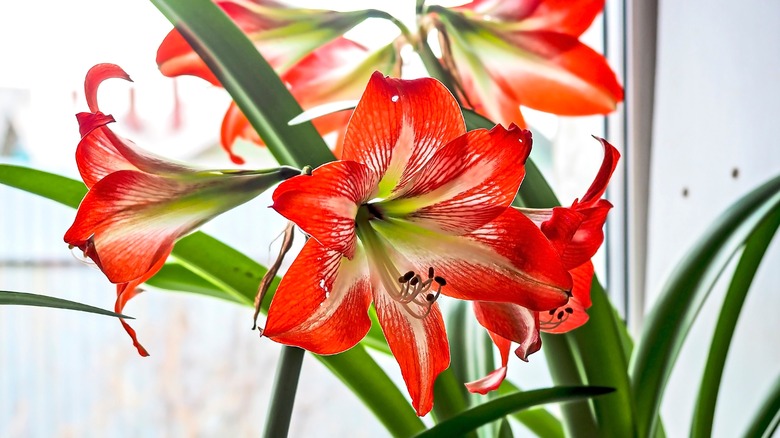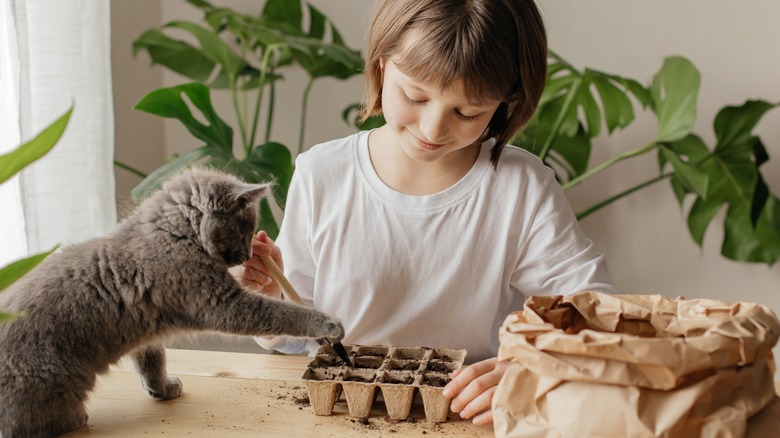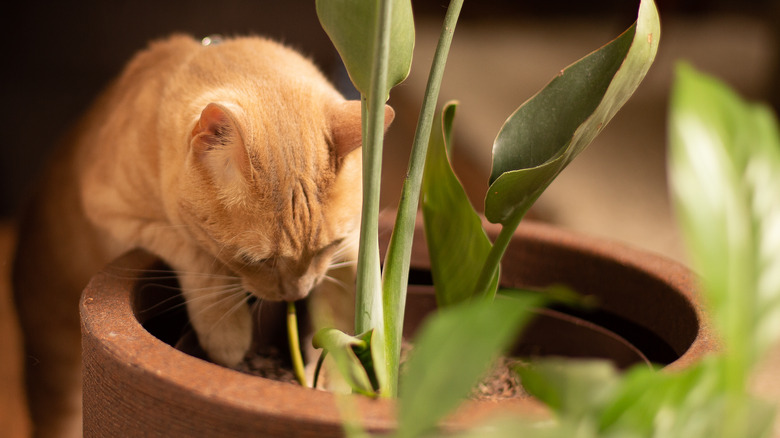Why You May Want To Think Twice Before Growing Amaryllis
With their clusters of bright blossoms on foot-long stems, amaryllis plants can bring a bit of life to your home during the winter months. This low-maintenance plant has become a staple for holiday gift giving with its legendary link to beauty and love. Adding to its appeal, planting amaryllis and watching it grow delivers a lot of rewards without much work. These plants thrive both indoors and out. With direct sunlight and just a little water, their vivid blooms can last between December and June. If you're lucky to live in a warmer region, amaryllis can also be a lovely addition to your garden's flowerbeds. This tropical plant does well in USDA zones 8 to 10.
However, while these common gifts inject a lively splash of color to your décor, you may want to think twice before making this plant part of your indoor or outdoor garden. All parts of this plant are toxic to humans and pets, and its effects are especially hazardous for dogs and cats. At the same time, before you whisk your amaryllis into the trash, read on to discover what the risks are and how to minimize them as you enjoy a bit of summer inside your home.
What are the risks, and how can you avoid them?
Inquisitive two- and four-legged family members are often drawn to an amaryllis' flashy flowers. Toddlers, cats, and dogs are particularly susceptible to contact. It's essential to know the possible harms of touching or ingesting the plant and taking proactive steps to keep loved ones safe. From itchy skin to violent stomach upset, getting too close to this plant can take the gild from this lily.
From the flowers to the stalk to the bulb, each segment of an amaryllis contains a toxic alkaloid called lycorine, and the bulb carries the highest concentration of the toxin. This substance is a skin irritant and ingestion can produce symptoms from gastrointestinal upset to seizures and even death in pets. Possible signs of ingestion include hypersalivation, vomiting, diarrhea, and tremors. If you notice these signs in your pet, contact your veterinarian or the Pet Poison Hotline right away. Further, if you think your child may have touched the sap or ingested part of the plant, call poison control immediately and wash the affected area with soap and warm water.
If the thought of throwing out your amaryllis is too tragic, there are ways to minimize the chances of mishap. Keeping the plant well out of reach of small hands and sniffing noses may be enough. Consider training children and pets to stay away from all houseplants. Yet, the best prevention is not to keep an amaryllis in your home or garden at all.
What can you grow instead?
Watching the growing process of flowering bulbs can bring joy to the chilly seasons. However, many blooms such as hyacinths, tulips, daffodils, amaryllis, and lilies that are often grown indoors in winter are poisonous if ingested. The lovely scents of these spring flowers may prove to be too tempting for children and fur babies. Because of this, it's typically best to choose to decorate with different plants altogether.
Some houseplants that are safe for pets and children and that also produce bright blooms like the amaryllis plant are African violets, fuchsias, lipstick plants, canna lilies, and nasturtium. However, still keep in mind that pets and children probably shouldn't consume large amounts of these plants — but they're not considered toxic. Many of these plants are as easy to grow indoors as amaryllis. A collection of plants offering varied colors will keep you from missing your holiday blossoms too much. Even better, keeping a nasturtium indoors can help you add zing to your meals, as this plant's flowers, seeds, and leaves are packed with vitamin C. You can incorporate this beautiful and tasty plant into salads, main dishes, and even desserts.


